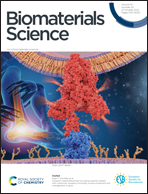Recent advances in biological membrane-based nanomaterials for cancer therapy
Abstract
Nanomaterials have shown significant advantages in cancer theranostics, owing to their enhanced permeability and retention effect in tumors and multi-function integration capability. Biological membranes, which are collected from various cells and their secreted membrane structures, can further be applied to establish membrane-based nanomaterials with perfect biocompatibility, tumor-targeting capacity, immune-stimulatory activity and adjustable versatility for cancer therapy. In this review, according to their source, membranes are divided into four groups: (1) cell membranes; (2) secretory membranes; (3) engineered membranes; and (4) hybrid membranes. First, cell membranes can be extracted from natural cells of the body, tumor tissue cells, and bacteria. Furthermore, secretory membranes mainly refer to exosome, apoptotic body and bacterial outer membrane vesicle, and membranes with specific protein/peptide expression or therapeutic inclusions are obtained from engineered cells. Finally, a hybrid membrane will be constituted by two or more of the abovementioned membranes. These membranes can form drug-carrying nanoparticles themselves or coat multi-functional nanoparticles, further realizing efficient cancer therapy. We summarize the application of various biological membrane-based nanomaterials in cancer therapy and point out their advantages as well as the places that need to be further improved, providing systematic knowledge of this field and a strategy for further optimization.



 Please wait while we load your content...
Please wait while we load your content...